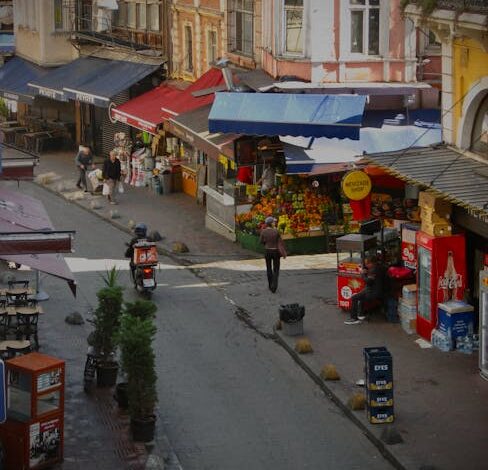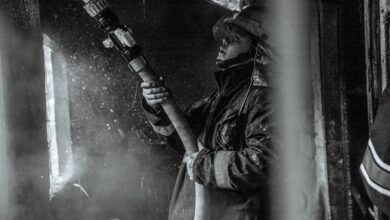Scientists Can See Earth’s Permafrost Thawing From Space

Scientists Can See Earth’s Permafrost Thawing From Space
Estimated reading time: 7 minutes
- Satellite radar technology now enables scientists to monitor Earth’s permafrost thaw from space, significantly advancing research beyond laborious ground surveys.
- Thawing permafrost has immediate, devastating effects on Arctic communities, causing infrastructural collapse, and globally, it releases potent greenhouse gases and harmful substances.
- Breakthroughs by scientists like Kevin Schaefer and Simon Zwieback use radar to measure subtle ground shifts and infer deep ice content, providing crucial data for infrastructure planning and risk assessment.
- The issue extends to national security, as permafrost thaw threatens military bases and critical infrastructure in permafrost-heavy regions worldwide, including Alaska, Russia, and China.
- Collaborative initiatives like Permafrost Pathways integrate remote sensing, fieldwork, and indigenous knowledge to develop practical, community-specific adaptation strategies, such as validating new relocation sites for vulnerable towns.
- A Ground-Level View of a Global Crisis
- Unlocking Permafrost Secrets with Satellite Radar
- From Local Instability to Global Intelligence
- Bridging the Divide: From Satellite Data to Community Action
- Actionable Steps to Support Permafrost Resilience
- Frequently Asked Questions (FAQ)
Deep beneath the frozen landscapes of the Arctic, a silent crisis is unfolding, one with far-reaching consequences for both local communities and the entire planet. The ground, once thought to be permanently frozen, is now yielding to warming temperatures. This profound transformation is visible even from hundreds of miles above Earth.
Scientists are harnessing the power of sophisticated satellite technology to not only observe this monumental shift but also to predict its future impacts. This groundbreaking work offers a crucial lifeline to vulnerable communities and critical infrastructure across the Northern Hemisphere.
A Ground-Level View of a Global Crisis
The impacts are stark and immediate for those living on the front lines of climate change. Consider the plight of an Alaskan village: “Something is rotten in the city of Nunapitchuk. In recent years, a crack has formed in the middle of a house. Sewage has leached into the earth. Soil has eroded around buildings, leaving them perched atop precarious lumps of dirt. There are eternal puddles. And mold. The ground can feel squishy, sodden. This small town in northern Alaska is experiencing a sometimes overlooked consequence of climate change: thawing permafrost. And Nunapitchuk is far from the only Arctic town to find itself in such a predicament. Permafrost, which lies beneath about 15% of the land in the Northern Hemisphere, is defined as ground that has remained frozen for at least two years. Historically, much of the world’s permafrost has remained solid and stable for far longer, allowing people to build whole towns atop it. But as the planet warms, a process that is happening more rapidly near the poles than at more temperate latitudes, permafrost is thawing and causing a host of infrastructural and environmental problems.”
This direct account from Nunapitchuk paints a vivid picture of the daily challenges faced by countless Arctic communities. As the ground loses its structural integrity, homes, roads, and vital utilities buckle and collapse. But the problem extends far beyond crumbling infrastructure.
Thawing permafrost contains twice as much sequestered carbon as currently inhabits the atmosphere. As it melts, it releases potent greenhouse gases like carbon dioxide and methane, creating a dangerous feedback loop that accelerates global warming. Moreover, ancient microbes and previously trapped heavy metals are set free, posing additional environmental and health risks. Understanding and anticipating these changes is paramount for both local survival and global ecological stability.
Unlocking Permafrost Secrets with Satellite Radar
For many years, understanding these complex freeze-thaw dynamics required laborious, hands-on ground surveys. Researchers would spend hours drilling core samples, a process that was both time-consuming and expensive, and limited in scope. However, a revolutionary shift began in the late 2000s, spearheaded by Kevin Schaefer, a senior scientist at the Cooperative Institute for Research in Environmental Sciences at the University of Colorado Boulder.
Schaefer’s innovative idea, sparked during a field trip to Toolik Lake, Alaska, was to use radar systems aboard satellites to survey the ground. He realized that space-based radar could detect the subtle sinking and heaving of the land as temperatures changed. The ‘active layer’—the soil directly above the permafrost—expands and contracts seasonally. During summer, ice melts, causing the ground to dip; in winter, water refreezes and expands, pushing the ground back up. These tiny shifts, typically one to five centimeters, could be precisely measured by radar.
By comparing radar measurements at the start and end of the thaw season, Schaefer could determine the elevation difference, estimating how much water had thawed and refrozen and how deep the thaw extended. This breakthrough, first detailed in a 2012 paper, opened a new subfield of permafrost research. With the advent of global data sets from government satellites like the European Space Agency’s Sentinel and commercial observations from companies like Iceye, what was once a regional, bespoke analysis is now evolving into automated, large-scale monitoring and prediction.
From Local Instability to Global Intelligence
While Schaefer’s work provided foundational methods for observing surface changes, scientists like Simon Zwieback at the University of Alaska Fairbanks are pushing the boundaries further, seeking to understand the ‘excess ice’ buried deeper within the permafrost. Zwieback, whose office overlooks a university parking lot where a new sinkhole dramatically demonstrates the problem, recognized that superficial changes didn’t fully reveal the long-term destabilization risks.
He developed an algorithm that ingests radar-measured subsidence data over time, combined with environmental information like temperature. By creating a digital model of the land and adjusting simulated ground ice amounts to match real-world subsidence, Zwieback could infer the quantity of ice hidden beneath the surface. His approach identified subtle clues during warmer summers, where ice-rich areas would dip more than expected—a precursor to more significant future collapses. This capability to map deep ice content is invaluable for planning infrastructure, from civilian subdivisions to military airfields.
Indeed, the implications of thawing permafrost extend into national security. The National Geospatial-Intelligence Agency (NGA), a top US intelligence agency, is deeply invested in this research. The same problems plaguing civilian homes in the Arctic also threaten military infrastructure, both domestically and abroad. Alaska, with 85% of its land on permafrost, hosts six military bases and 21 missile-detecting radar sites, most vulnerable to thaw.
Beyond American borders, understanding permafrost weaknesses in countries like Russia (where 60% of the land is permafrost, affecting over 40% of northern buildings) and China (where critical infrastructure like the Qinghai-Tibet Railway and vital oil and gas pipelines are susceptible to thaw) provides crucial ‘situational awareness’ for international competitors. The NGA, which has funded both Schaefer and Zwieback’s work, recognizes that these vulnerabilities could weaken strategic positions and impact global stability.
Bridging the Divide: From Satellite Data to Community Action
Despite the incredible advances in remote sensing, ground-truthing remains an indispensable part of permafrost research. Scientists like Schaefer, equipped with ground-penetrating radar units—large, box-like devices they drag across the tundra—and Zwieback, who conducts arduous coring expeditions, still venture into the field. These on-the-ground measurements, though labor-intensive and costly, are vital for validating the inferences made from space, ensuring the accuracy of satellite algorithms down to the crucial details of ice content and thaw depth.
The synergy between remote sensing and fieldwork is creating unprecedented opportunities. While physically sampling a small area can cost tens of thousands of dollars, running Zwieback’s algorithm on free, publicly available satellite data costs only a few hundred. This dramatically reduces barriers to accessing critical information, democratizing permafrost monitoring.
The ultimate goal, however, is to bridge the gap between cutting-edge science and the urgent needs of affected communities. Kevin Schaefer, through his company Weather Stream, is helping communities proactively identify infrastructure risks. Erin Trochim, a geospatial scientist at the University of Alaska Fairbanks, highlights the frustration that this vital scientific and engineering knowledge often doesn’t translate into on-the-ground construction practices for everyday residents.
A significant step forward is being taken by Permafrost Pathways, a venture launched with a $41 million grant. This initiative collaborates directly with affected communities, including Nunapitchuk, to build on-the-ground data-gathering networks. By combining this local information with satellite data and indigenous knowledge, they develop adaptation strategies. As Sue Natali, head of the project, puts it, “when you know what your problem is and what you’re dealing with, it’s only then that you can actually make a plan to address it.” Nunapitchuk, for example, has decided to relocate to a more stable, higher spot, with Permafrost Pathways scientists validating the long-term stability of the new site. The use of radar is particularly valuable in the often-cloudy Alaskan environment, providing consistent data where other satellite methods fail.
Actionable Steps to Support Permafrost Resilience
Understanding the invisible changes beneath our feet is a shared responsibility. Here are ways you can contribute to addressing the permafrost crisis:
- Support Research & Adaptation Initiatives: Donate to or raise awareness about organizations like Permafrost Pathways and other scientific bodies dedicated to permafrost research and community adaptation in the Arctic.
- Educate and Advocate: Learn more about climate change and its specific impacts on permafrost. Share this knowledge with your networks to foster a deeper understanding of the global consequences. Advocate for policies that promote sustainable practices and invest in climate resilience.
- Reduce Your Carbon Footprint: While global in nature, every action counts. Strive to reduce your personal and household carbon emissions to mitigate the overarching climate warming that accelerates permafrost thaw.
The thawing of Earth’s permafrost represents a critical environmental and humanitarian challenge, transforming landscapes and threatening lives. But with the advent of sophisticated satellite radar technology, scientists now possess an unprecedented ‘eye in the sky’ to monitor, understand, and even predict these complex changes. From helping Arctic towns like Nunapitchuk make life-altering decisions to informing national security strategies, this scientific ingenuity is paving the way for proactive adaptation. By combining remote sensing with vital on-the-ground validation and community collaboration, we can work towards a future where human ingenuity helps communities step forward on firmer ground, even as our planet continues to warm.
Stay informed about the latest advancements in climate science and permafrost research. Visit our blog for more insights into how technology is helping us tackle the planet’s most pressing environmental challenges.
Frequently Asked Questions (FAQ)
What is permafrost and why is its thawing a concern?
Permafrost is ground that has remained frozen for at least two consecutive years, historically for much longer. Its thawing is a major concern because it leads to infrastructure damage (homes, roads, utilities collapsing), releases potent greenhouse gases (carbon dioxide and methane) that accelerate global warming, and frees ancient microbes and heavy metals posing environmental and health risks.
How are scientists using satellites to monitor permafrost thaw?
Scientists are using satellite radar systems to detect subtle changes in ground elevation. As the ‘active layer’ above permafrost thaws in summer, the ground sinks; in winter, refreezing water causes it to heave. These tiny shifts (1-5 cm) are precisely measured by radar, allowing scientists to estimate thaw depth and water content. Advanced algorithms can even infer the amount of ‘excess ice’ buried deeper within the permafrost, providing insights into long-term destabilization risks.
What are the immediate impacts of thawing permafrost on Arctic communities?
Arctic communities face immediate and severe impacts. The thawing ground loses its structural integrity, causing homes to crack, sewage systems to leach, and buildings to become unstable. Roads and vital utilities buckle and collapse, disrupting daily life and making infrastructure maintenance incredibly challenging. This direct impact on infrastructure forces communities to consider expensive adaptation measures, including relocation.
Beyond local impacts, what are the global consequences of permafrost thaw?
Globally, thawing permafrost creates a dangerous feedback loop for climate change by releasing vast amounts of sequestered carbon in the form of greenhouse gases like carbon dioxide and methane, which further accelerate global warming. It also has national security implications, threatening military bases and critical infrastructure in permafrost-heavy nations like the United States (Alaska), Russia, and China, potentially impacting strategic positions and global stability.
How is the scientific community working with local communities to address permafrost thawing?
The scientific community is increasingly collaborating with local communities to translate research into actionable strategies. Initiatives like Permafrost Pathways combine satellite data, ground-truthing, and indigenous knowledge to develop tailored adaptation plans. For example, in Nunapitchuk, scientists are validating new, more stable locations for community relocation. This ensures that cutting-edge scientific knowledge directly supports the urgent needs of affected residents.





